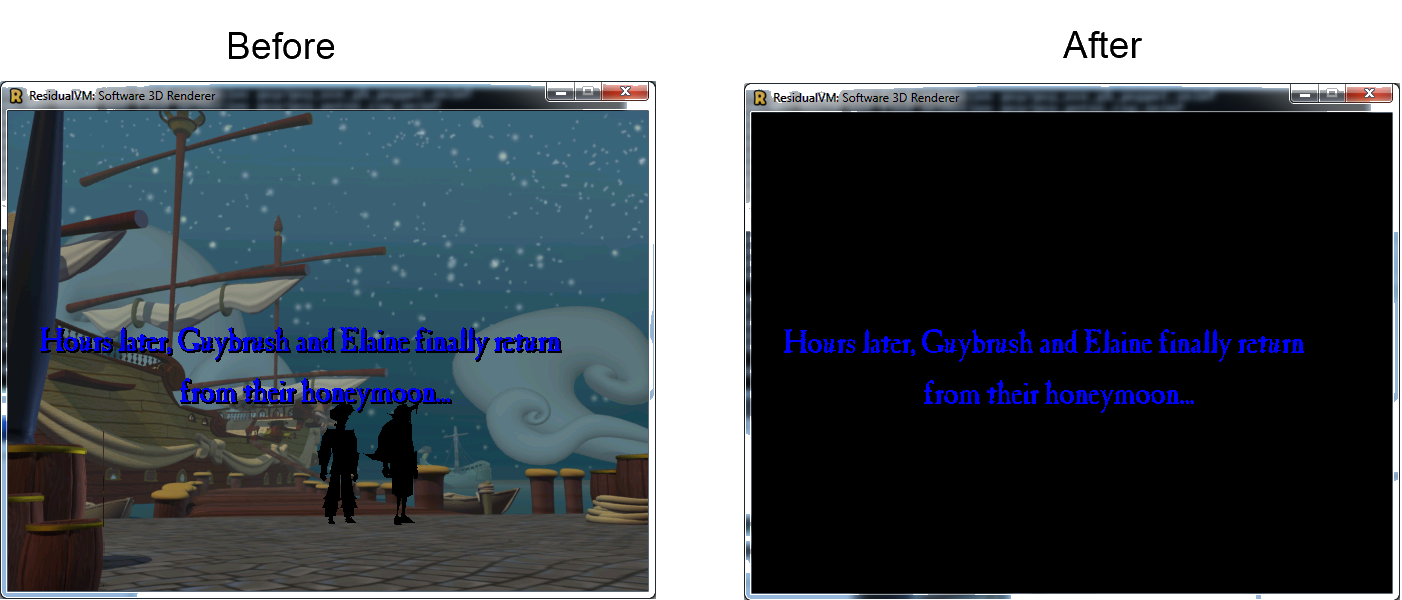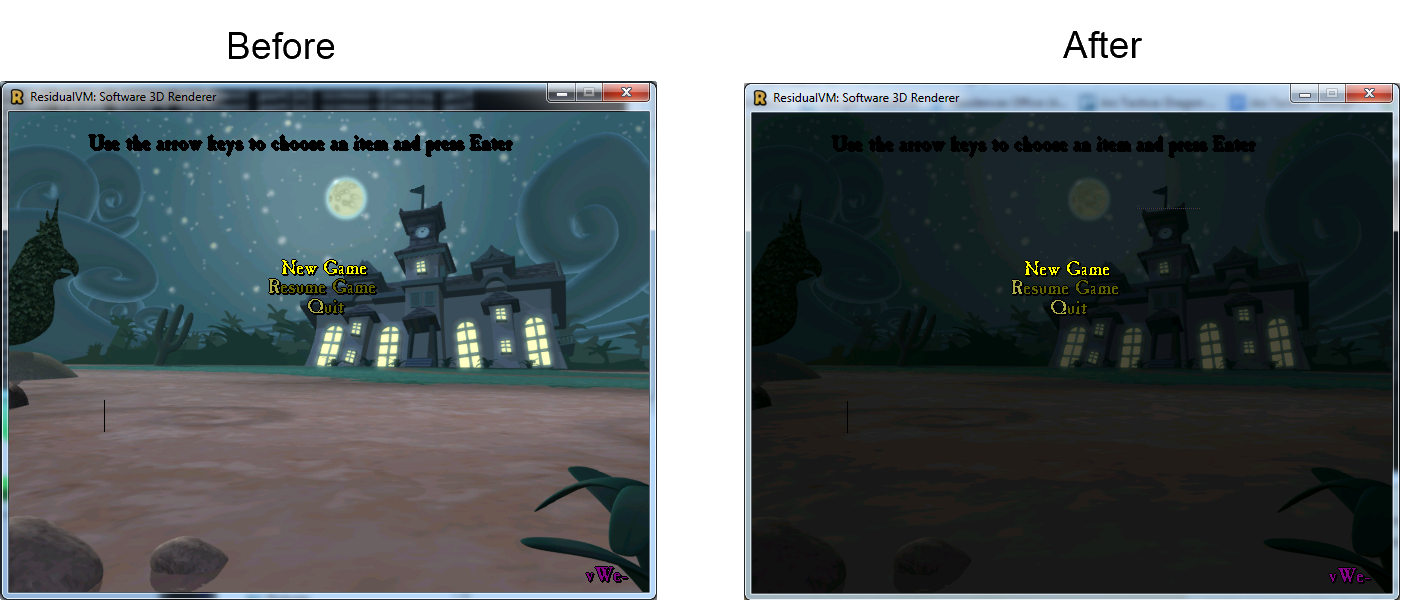In the past week I’ve been working on two tasks: implementation of glBlendFunc (and thus alpha blending) and Myst 3 tinyGL software renderer.
After the refactoring of frame buffer code implementing alpha blending was rather easy: every write access to the screen is encapsulated through a function that checks if we enabled blending and what kind of blending is currently active in the internal state machine and performs the operation accordingly.
In order to test the function I forced all the models in Grim Fandango to be 50% transparent and here’s the result:
 Surprisingly for me, the implementation of pixel blending in the rendering pipeline did not hurt performance by a substancial amount as the renderer runs just about 8-12% slower than before.
Surprisingly for me, the implementation of pixel blending in the rendering pipeline did not hurt performance by a substancial amount as the renderer runs just about 8-12% slower than before.
Thanks to the implementation of alpha blending now EMI is rendered correctly, so here’s some screenshot to show the difference:

 I also had to work on the implementation of Myst 3 software renderer; the process of implementing it went quite smoothly even though I stumbled upon some limitations of TinyGL (mainly the lack of support to texture bigger than 256×256) that will be hopefully lifted soon.
I also had to work on the implementation of Myst 3 software renderer; the process of implementing it went quite smoothly even though I stumbled upon some limitations of TinyGL (mainly the lack of support to texture bigger than 256×256) that will be hopefully lifted soon.
I leave you with a screenshot comparation of the two versions here so that you can clearly see the difference:
 And that’s pretty much it for this week, my next tasks will be to implement some sort of extension to TinyGL to enable 2D blitting and then an internal dirty rect implementation inside TinyGL to avoid redrawing static portions of the screen.
And that’s pretty much it for this week, my next tasks will be to implement some sort of extension to TinyGL to enable 2D blitting and then an internal dirty rect implementation inside TinyGL to avoid redrawing static portions of the screen.